‘Wise’ face of ancient Egypt’s most powerful pharaoh moments before death is revealed
The ‘wise’ face of ancient Egypt’s most powerful pharaoh has been revealed, showing him moments before his death.
Ramesses II, who ruled in the 13th century BC, was the country’s greatest ruler. He was known for his colossal statues and military exploits during his reign from 1279 to 1213 BC.
Scientists used a 3D model of the king’s skull and added soft tissue and skin to recreate his appearance at the time of his death he was approximately 90 years old.
The lifelike image revealed a slight, elderly man with a weathered face—some of whose features resembled the gigantic statues of Ramses that still stand in Egypt.
Ramses II, who reigned in the 13th century BC, was the nation’s greatest ruler, known for his colossal statues and military exploits during his reign from 1279 to 1213 BC
Cicero Moraes, the Brazilian graphics expert behind the new game, said: ‘In the present study we carried out a very broad analysis, comparing the reconstructed face with images of Ramses II.
‘The goal was to understand to what extent the images are reliable, because many think that compatibility would be good. ‘But we saw that this is not the case. The images indicate a good compatibility with the shape of the nose and even, in some situations, with the shape of the face.’
The statues of Ramses II have a more delicate forehead and lips and a chin that is more pronounced, making the features in the image ‘insufficiently reliable.’
“We also analyzed anthropometric and DNA data from ancient Egyptian populations, and all the pathways seem to point to a population made up of many elements that are difficult to standardize,” Moraes says.
The team chose a skin tone palette found in ancient Egyptian art because the true hue is unknown.
They also designed a grayscale version where the pharaoh’s eyes were closed, so that no judgement could be made about his skin color. However, the team has indicated that criticism will soon follow.
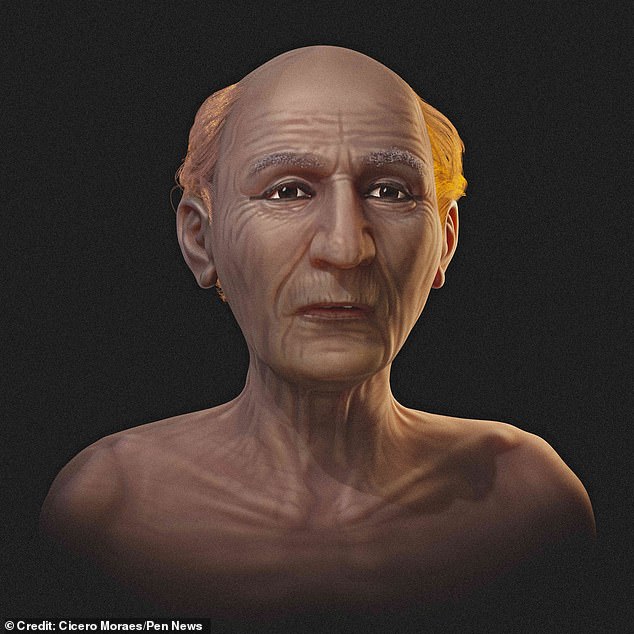
Scientists used a 3D model of the king’s mummified face, adding a layer of soft tissue and skin to recreate his appearance at the time of his death, aged around 90
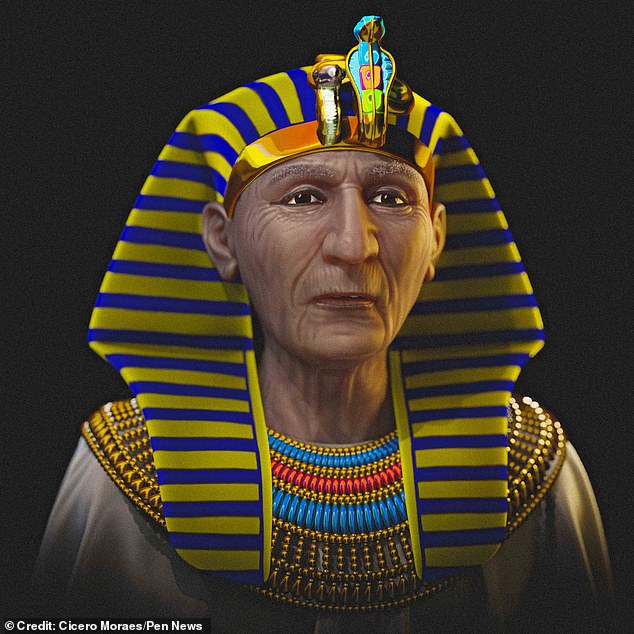
The lifelike statue revealed a frail, elderly man with a weathered face – and some features resembled the giant statues of Ramses that still stand in Egypt
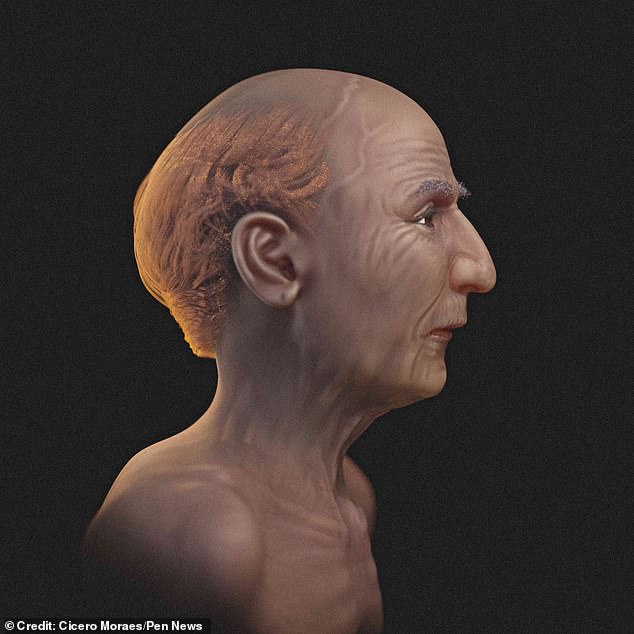
The team chose a skin tone palette seen in ancient Egyptian art, as the actual hue is unknown.
“There is always criticism of any work published on the Internet, just look at the comments on the news and the debate on social networks,” Moraes said.
‘I am in favor of freedom of expression. I have never blocked anyone on my networks because they thought differently than me or because they insulted me.
“But I also have freedom of speech and I generally use it to clarify points and refute what is incoherent.”
The team also used information from a 1976 study of Ramesses’ mummified remains, found in 1881, which repaired tissues and created new bandages.
The study also revealed that Ramesses II had a noticeable overbite and that his teeth were significantly worn down.
The pharaoh also had poor dental and bone health, mainly due to an abscess, which must have caused him a lot of pain.
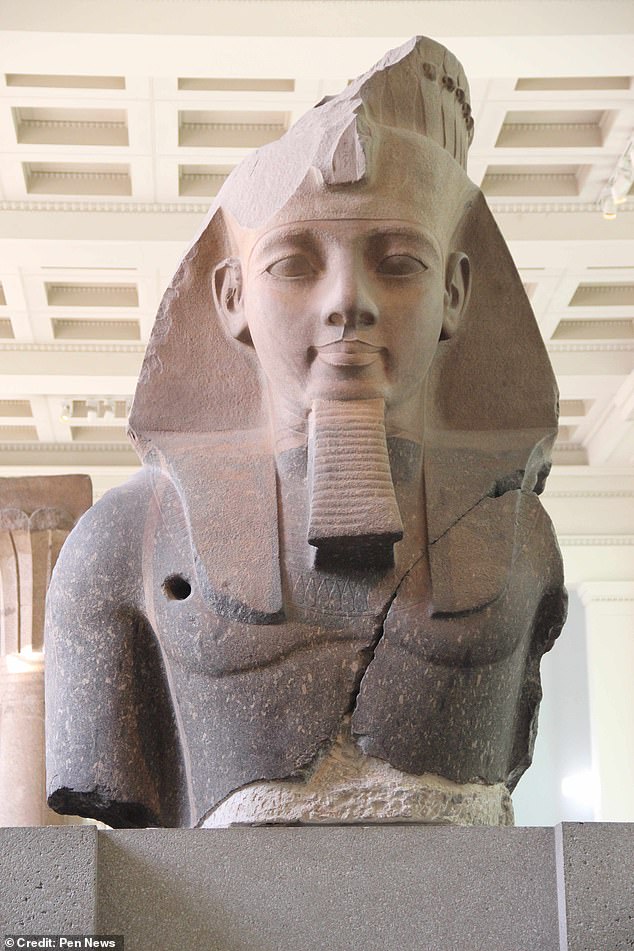
The statues of Ramesses II have a more delicate forehead and lips and a more pronounced chin, making the features in the image ‘insufficiently reliable’.
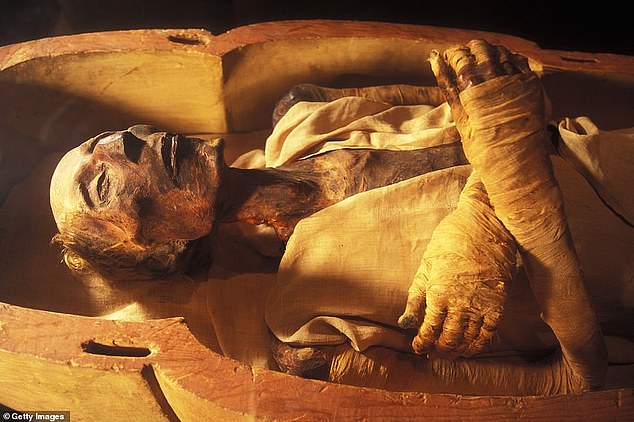
The king’s remains were discovered in 1881
Although the king had a long life, His muscles showed signs of memory loss and he had very pronounced veins on his forehead,” Moraes and his team said.
The team wanted to express the signs of aging in the reconstruction of the king.
They put together data from hundreds of modern-day Egyptians to reveal the likely thickness of the pharaoh’s skin at various points on his skull.
Another technique was anatomical deformation, in which the face and skull of a living donor – who also had a pronounced overbite – were digitally altered to match the mummy’s dimensions.
The final result interpolated these approaches, before properly aging it and adding subjective elements such as clothing, revealing what Moraes called a “wise” face.

The result also resembled an earlier reconstruction of a younger Ramses II from 2022 (see photo)
The result also seemed similar after an earlier reconstruction from 2022, made by Sahar Saleem of Cairo University and Caroline Wilkinson of Liverpool John Moores University.
Different methods were used at the time, but Moraes said he was pleased with the outcome.
The 2022 facial reconstruction was performed by scientists from Egypt and England, who also used a 3D model of his skull.
They then reversed the aging process and turned back the clock almost half a century, revealing his face at the height of his powers.
Saleem said the outcome had revealed a “very handsome” ruler.
“My imagination of Ramesses II’s face was influenced by his mother’s face,” she continued.
‘However, the facial reconstruction has helped give the mummy a living face.
‘I think the reconstructed face is of a very handsome Egyptian, with facial features characteristic of Ramses II: the pronounced nose and the strong jaw.’
